Holbeck, West Riding of Yorkshire
Up to 1834
A parliamentary report of 1777 recorded a parish workhouse in operation in Holbeck with accommodation for up to 45 inmates. The 1854 map below indicates that it was located at the south side of Elland Road, at its junction with Lane End Place in Holbeck
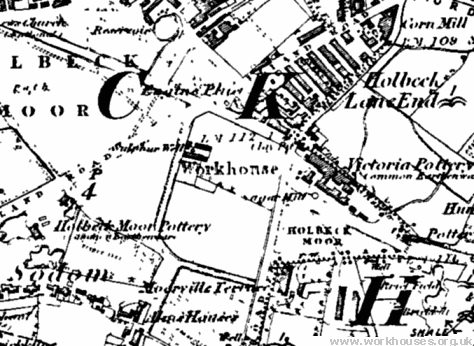
Holbeck workhouse site, 1854.
After 1834
Between 1844 and 1862, Holbeck, at the west of Leeds, was under the jurisdiction of the Leeds Guardians. On 29 September, 1862, because of the growth in population in the area, Holbeck was constituted as an independent Poor Law Township with an 8-strong Board of Guardians.
In 1865, the Overseers of the Poor in the nearby township of Churwell erected a new building, presumably used for administrative purposes, on Victoria Street in Churwell.
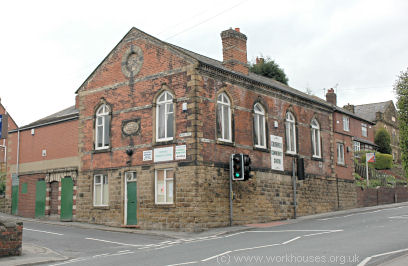
Churwell 1865 poorhouse, 2005.
© Peter Higginbotham.
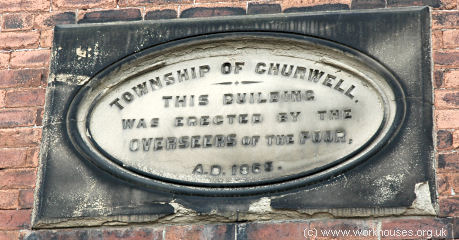
Churwell 1865 poorhouse, 2005.
© Peter Higginbotham.
In 1869, following the abolition of the Carlton Gilbert Union, a Holbeck Poor Law Union was formed, incorporating two former Carlton Union members. The new union officially came into existence on 21 June 1869 and comprised Holbeck (represented by 8 Guardians), Beeston (3) and Churwell (2). The union operated until 1904 when Holbeck reverted to being a Poor Law Parish.
In 1863-4 a new Holbeck workhouse was erected on the existing Holbeck workhouse site to the south of Elland Road. Designed by William Hill of Leeds, its construction cost over £6,000. The building had a T-shaped main block with males accommodated at one side and females at the other. The rear wing probably contained a dining-hall-cum-chapel. In 1881-3, two additional wings for the main block, and a new 100-bed infirmary at the east of the site, were erected at a cost of more than £10,000. In 1903, a further £12,000 was spent on new receiving wards at the workhouse entrance, a new laundry, kitchens, bakery, and extra staff accommodation. The site layout is shown on the 1906 map below.
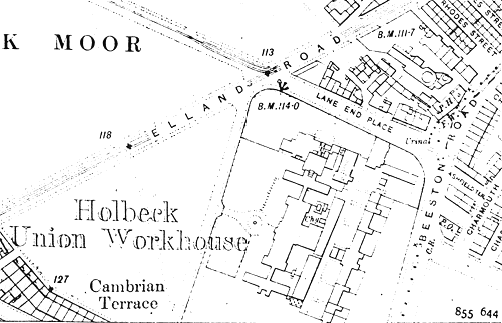
Holbeck workhouse site, 1906.
From 1904, to protect them from disadvantage in later life, the birth certificates for those born in the workhouse gave its address just as 2 Lane End Place, Holbeck, Leeds. In later years, the address became South Lodge, Lane End Place, Holbeck.
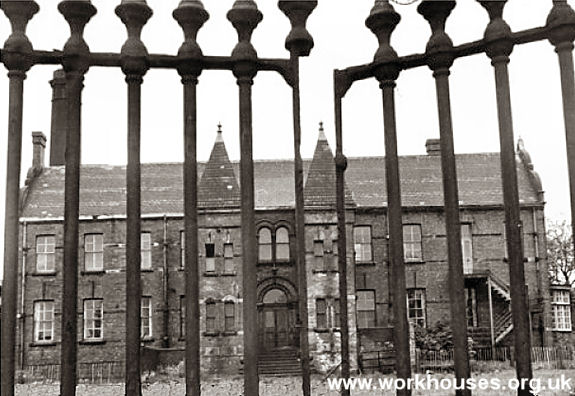
South Lodge entrance, c.1968.
In the summer of 1921, a party of inmates enjoyed a charabanc outing to Boston Spa.
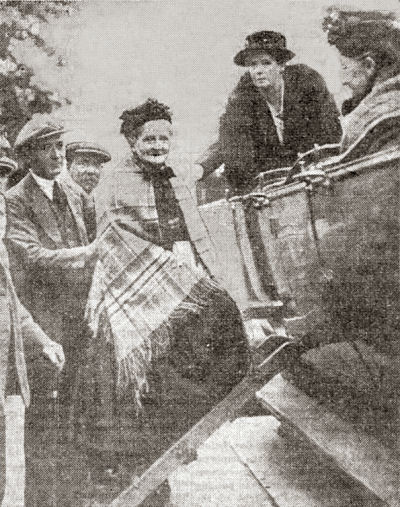
An elderly Holbeck Workhouse inmate boards a coach to Boston Spa, 1921.
In 1925, Holbeck, togther with Hunslet and Bramley, were absorbed by Leeds.
After 1930, the former Holbeck workhouse became an old people's home and later as accommodation for homeless familes.
Jennie O'Donnell adds:
I believe Holbeck continued to be used for other purposes as well at least into the mid 1950s. I know this because my father (a shopkeeper) was declared bankrupt around 1953/54. The bailiffs came and my parents, my young sister and myself (aged around 8 or 9) were evicted from our home/shop. My father found lodgings but my mother, my sister and I were housed at Holbeck (then known as South Lodge). I am now in my sixties but I still remember the entranceway over which was engraved 'Home for Destitute People' and the shame I felt at being there. I attended school not far away and was fearful my classmates would find out where I was, so I used to leave school and walk in the opposite direction, doubling back when I felt it was safe to do so. We shared a small room with another woman who had also been evicted and she told us how all her belongings had been thrown into the street. The only other part of the buildings I can recall is a long room filled with old gas cookers where we would go to cook meals.
All the workhouse buildings have now been demolished.
Children's Homes
In around 1910, the Holbeck Guardians opened the first of the union's children's scattered homes at 62 Malvern Terrace, Beeston Hill. By 1912, homes had also been opened at 5 South Mount Street, Beeston Hill, and at 6 Granville Terrace, Holbeck. The homes appear to have ceased operating by the end of the First World War.
Staff
Inmates
Records
Note: many repositories impose a closure period of up to 100 years for records identifying individuals. Before travelling a long distance, always check that the records you want to consult will be available.
- West Yorkshire Archive Service (Leeds Office), Nepshaw Lane South, Morley, Leeds LS27 7JQ. Limited holdings include: Guardians' minutes (1869-74); Births register (1863-1914); Deaths register (1862-1914); Lunatics in workhouse register (1883-1914).
Bibliography
Links
Unless otherwise indicated, this page () is copyright Peter Higginbotham. Contents may not be reproduced without permission.


